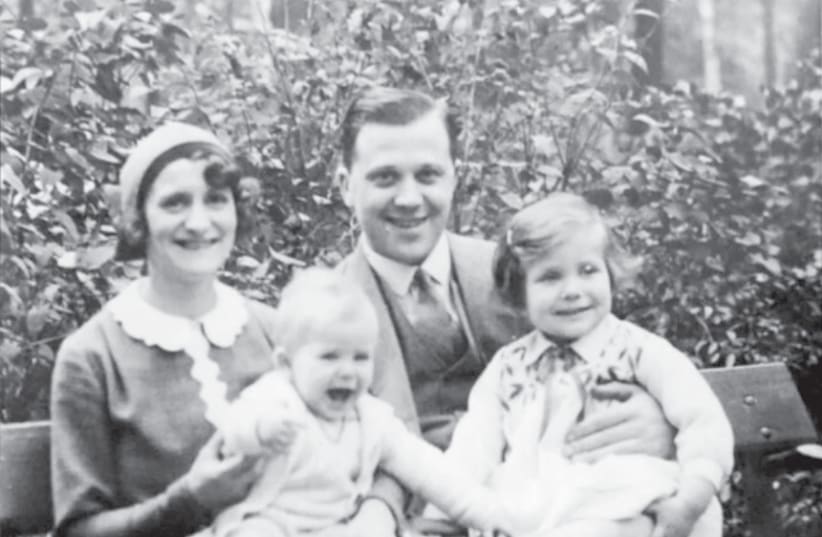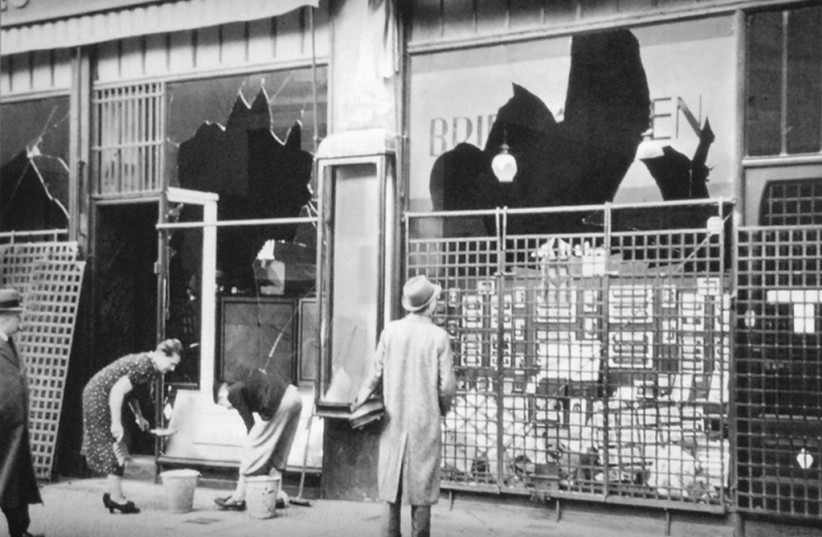In 1793, German philosopher Immanuel Kant wrote that, “The saying, ‘We must hearken to God, rather than to man,’” signifies no more than this, namely, that should any earthly legislation enjoin something immediately contradictory of the moral law, obedience is not to be rendered. The women Rosenstrasse protesters, in their refusal to divorce and abandon their Jewish husbands during the whole of the Nazi period, fulfilled that important moral principle.
Eighty years ago, hundreds of non-Jewish women married to nearly 2,000 Jewish men risked their lives protesting in front of a makeshift Gestapo prison on Berlin’s Rosenstrasse, soon to be sent to Auschwitz labor camps, never to be seen at home again. Undaunted by terrifying threats of “clear the streets or be shot,” they continue to call out, “We want our husbands back.”
The women kept coming and going, protesting and keeping watch continuously for a week until they convinced Hitler to release the men. But this was only by putting their own lives on the line.
Rosenstrasse protest: Emblematic of women's resistance to the Nazis
The Gestapo’s practice was to deport intermarried Jews when their partners divorced. But many Jewish persons within Germany – about 11,000 – survived openly and received official rations because their “Aryan” wives chose them over loyalty to an all-powerful regime, and in the face of severe discrimination and abuse. A further number survived in hiding, sheltered by extraordinarily brave German rescuers.
The Rosenstrasse protest was emblematic of these women’s resistance which began when Hitler took power in 1933, taking a direct form of noncompliance. Barred from halls of power, these women were among the pioneers of women’s protest against tyrannical rulers that has now exploded across the globe. In their unrelenting protest against a ferociously repressive dictatorship, they acted as heroes. But heroes like these are usually few and far between.
They showed how ordinary persons can come to act heroically by building up their capacity for defiance and risk, day by day. As Hitler took power in 1933, Nazis confidently reckoned that intermarried non-Jews – termed Aryans – married to Jews, would divorce, but that proved not to be the case. And indeed, these non-Jewish women soon paid a terrifying price for their loyalty to family.
BRAVING TAUNTS as friends fled, and ostracized by their own families, their partners, and in some cases losing hard-to-replace jobs, their children were also tossed from schools. Choosing to entwine their fate openly, every day with Jewish family members, they lived in constant uncertainty about their own lives during the Holocaust years.
In 1935, the Nuremberg Laws condemned sexual relations between Jews and Aryans as racial treason (Rassenschande). In the eyes of the regime and the Nazi Party, the vilest form of this treason occurred in ‘Jewish households’ where Jewish men lecherously despoiled gentile women.
Following the November 1938 Kristallnacht Pogrom, Hitler divided intermarriages into “privileged” and “nonprivileged,” and only the mostly latter would be required to wear the star, and marked publicly for banishment. The regime pressured intermarried Aryans under duress to divorce, making this available merely for the asking. The Gestapo frequently ordered them into the Gestapo’s foreboding headquarters to make threats and promises.
As of 1939, Jews in “nonprivileged” marriages – mostly Jewish men married to non-Jewish women, were forced out of their residences and crammed into “Jew houses.” Victor Klemperer, who survived due to his gentile wife, was forced into a house where only Jews lived. His wife Eva went with him, refusing his suggestion that she should leave if he was sent to a camp.
In another case, in 1941, when Elsa’s cousin first glimpsed Rudi Holzer wearing the star, a cousin who normally ran up to embrace them, ran off like a rabbit. Then her father banned her from ever visiting the family again until she left “her Jew.” Neighbors, who once envied her life with Rudi now spat on her, dropped a flowerpot from an upper floor as she passed underneath, and smeared her doorsteps with excrement.
In yet another story, failing to coerce Wally Grodka into divorce, the Gestapo told her mother that her child would be taken away “to be raised according to the principles of the Führer.” Wally’s mother then kept the child separated from her mother. “My wife was harassed much more than I was,” said her Jewish husband. “They constantly insulted her.” In German-conquered territories, especially in Eastern Europe, gentiles were sent to death along with their Jewish partners.
On December 6, 1942, Nazi propaganda minister Joseph Goebbels received Hitler’s go-ahead to deport all so-called “full” Jews, and wearing the star, including those in “nonprivileged” intermarriages. On February 18, 1943 Goebbels resolved to make Berlin, the German Reich capital, “judenrein – entirely free of Jews” by mid- or late-March, and their roundup began on February 26. He defined Jews as any persons wearing the star; that is, including those in “nonprivileged” marriages.
On February 27 on Rosenstrasse – around the corner from Gestapo headquarters and in view of Germans masses, not to mention foreign representatives and journalists – Charlotte Israel, married to a Jewish man, recalled meeting other intermarried women in front of the Rosenstrasse building while Nazi authorities were imprisoning their husbands. They agreed to gather the next day to protest.
Nearing rosenstrasse early on February 28, Annie Radlauer testified hearing a faint cry that grew ever louder of women in chorus demanding: “We want our husbands back.” Wisely, these women street protesters demanded only their husbands. They did not denounced the Nazi regime as such, although they were among the very few who had opposed Hitler continuously from the beginning, by remaining married to Jews.
On March 6 fearing an ever-growing public protest, Goebbels received Hitler’s consent to release the intermarried Jews. Hitler had assured him it was merely a temporary reboot, to be re-enacted at another future appropriate time.
After the war, the neighbors who had once spat on her in derision during the war, now met Elsa Holzer with, “Oh, hello, how are you?” as though the Nazis had never existed. “Once the eyes of the entire people should have turned to the fate of these outlaws,” wrote Georg Zivier, whose wife protested on Rosenstrasse for his release. “And the public failed to take note of the blazing of a small torch, on which a fire of general resistance against arbitrary tyranny might have been ignited.” Remembering the women is to recall a brilliant light in a suffocating gloom.
While a clear distinction must be drawn between the horrendous Nazi Germany in 1943 and persons living in less dictatorial societies these days, the example of the Rosenstrasse protesters serves as a reminder. Ultimate sovereignty resides with the people, not the politicians who govern them.
If these women were able to force the Nazi regime to release their Jewish husbands, who were targeted for elimination, certainly persons in democratic societies, taking a leaf from these courageous Berlin women, can take to the streets and more easily voice their protests when they feel that their civic liberties are under threat of being undermined.
If the Rosenstrasse women could succeed in the harsh conditions of a totalitarian regime, we are reminded that concerned citizens in more open societies these days can hope for even greater success when publicly and relentlessly protesting against attempts to abolish the rights they enjoy as free citizens. On the 80th anniversary of the women Rosenstrasse protest, ceremonies will be held in Berlin and Washington, to mark this unique event of human courage in a face off with a totalitarian regime.
Nathan Stoltzfus is head of the Rosenstrasse Foundation and teaches at the Florida State University. Mordecai Paldiel is former director of the Righteous Among the Nations Department, at Yad Vashem.

